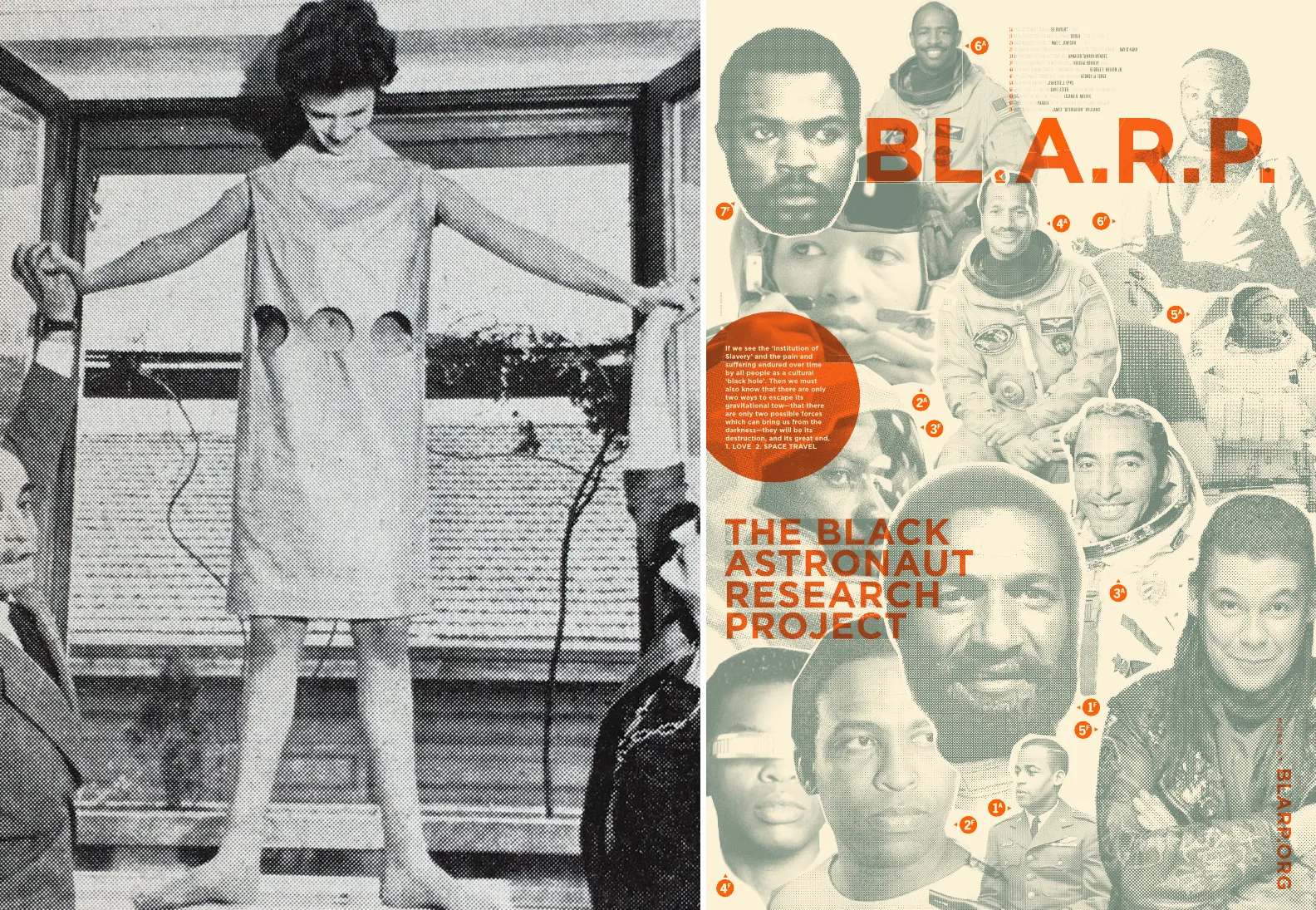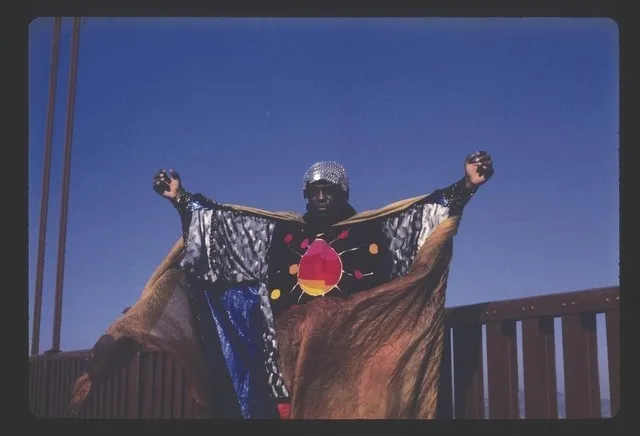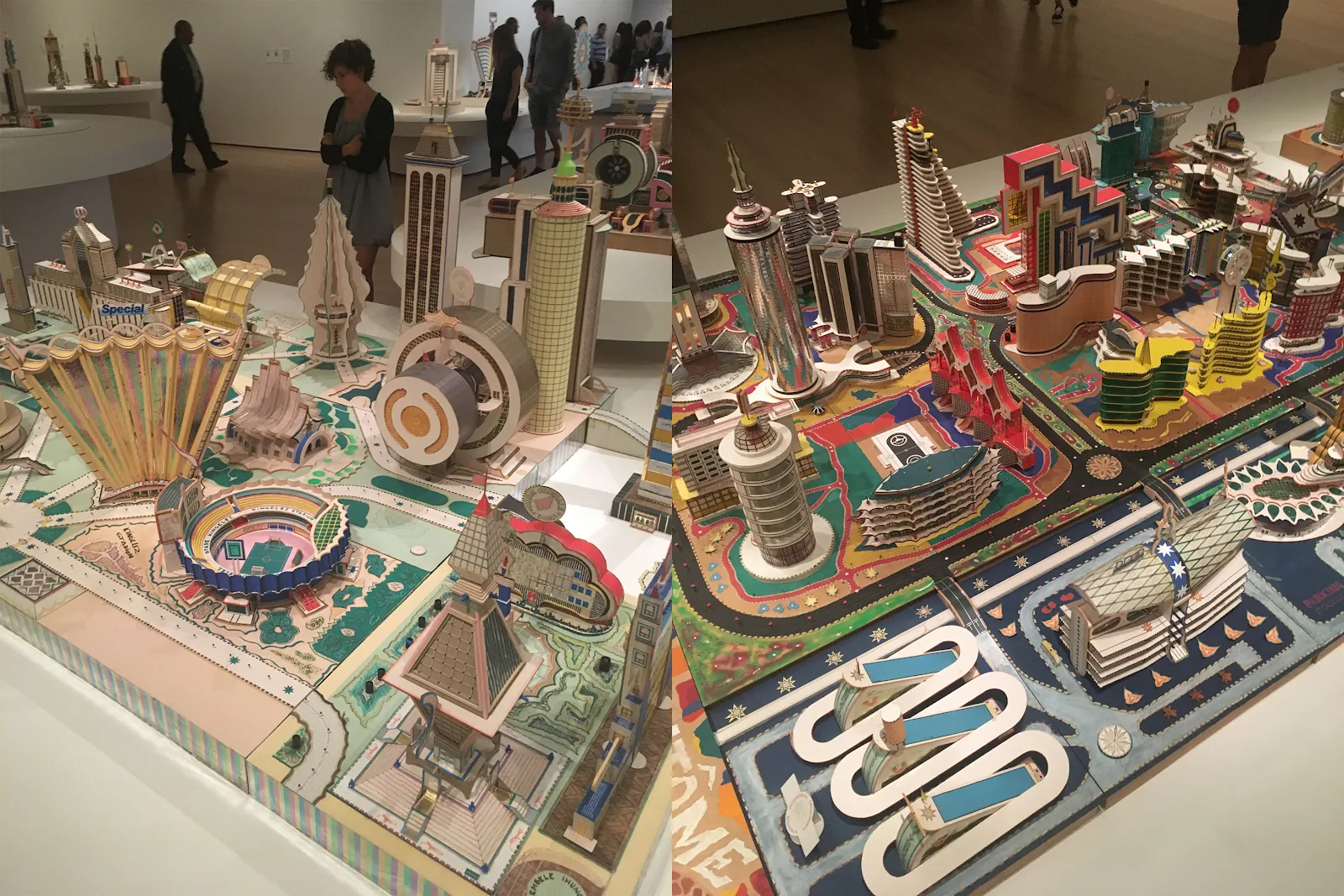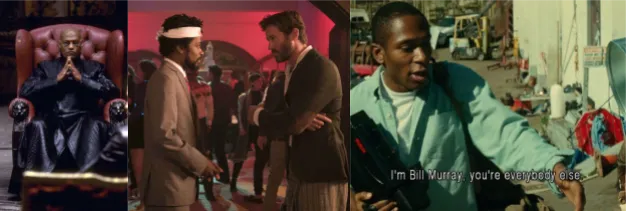The Construct (The Art & Politics of Afrofuturism)
We can accept the construct and all that it insists upon, or we can decide where it is false, re-write or invent a more suitable setting, put (part of) ourselves in it, and then begin being free.

Part One: Re-Introduction
Writing on The Art and Politics of Afrofuturism is to write about a continuous, evolutionary event — something moving, something blurry and uncertain. Certainly, something in the movement we call ‘Afrofuturism’ is complementary to other freedom movements of our times. But I want to draw attention to the possibility that so-called militant Black Power groups such as The Nation of Islam and The Black Panthers are in direct opposition, not to the Student Nonviolent Coordinating Committee (SNCC) and other nonviolent groups as first thought, but to Afrofuturism. With wildly imaginative products and ideas, Afrofuturism has the specific potential to diversify what is often perceived as a binary identification of political Black persons in the American psyche.
Part Two: The First Laws of Afrofuturism
I have discovered four useful concepts for engaging the Afrofuturistic frame. I will attempt to make these concepts useful to all of us as we explore. Thank you for your indulgence.
Law 1. All time and space occur simultaneously.
That is to say that there have been a lot of suggestions of which direction the future is, some are up, out, on, in, around, and through all of time and space. Some suggestions exist in the past, present, and in various speculative futures. All must be equally valid.
Law 2. Afrofuturism does not distinguish among works which are based in experience and reality, works which are based in the imagination, or works which are speculative.
It has not proved useful to say whether a creative project or idea has or has not been realized. What is important is that (Black) minds are conjuring and resolving challenges in their present or that they imagine a future where such a challenge requires their attention. It is also important to say that if access and opportunity to the various means of creative production and self-sufficiency have been historically denied to the Black person in America, then the imagination of that same person will have to suffice.
Law 3. Afrofuturism is a Human movement.
It does not serve Black people (or any other people) to create futures which still contain the germ of racism and the effects of historic bigotries. While Afrofuturism does not concern itself with the futures of White persons specifically (except where it does), it also does not aim to enslave or promote systems which lack equity or inclusion of all persons. Consequently, the Afrofuturist may be a person of any gender or race.
Law 4. Free your mind…and your ass will follow[2].
Any questions? I didn’t think so.
Part Three: An Exposition on Space and Time

Our understanding of Time is a construct with much history. Where our pre-history relationship to time is one of planetary shadows and magic — our early observation of the lights which move in the sky — our historic bodily association with time is one of labor in the delegated and often negotiated realms of impulse, purpose, work, slavery, devotion, and punishment.
Time is also Space (or more specifically, distance and light). The author’s reasonable extrapolation of our scientific understanding could say, “All Travel Is Time Travel,” especially travel to that which we will eventually call “outer space.”
This is relevant because when Sun Ra [3] offers us Space is the Place [4], we are energetically invited toward three things: 1. To travel. 2. To escape the gravitational force of this planet. 3. To look upwards and see the light that has traveled to make itself known to us and to imagine meeting who and what is in the stars.
All three of these invitations seem critical to the Negro in America who seeks an Afrofuturist identity. We need not critique Ra’s other-worldliness, but if we embrace his construct [5], we may find ourselves shot at unimaginable speeds toward the other planets in our solar system (perhaps Saturn or Pluto) with experiences and tools that bring lightness to (or lighten the burden of) the Negro and Human experience.
To Travel
The invitation to move freely and to travel is crucial because the United States first began to criminalize the movement of free people when slavery was abolished. The Black Codes of 1865 and 1866 [6], were put into effect to quell the free movement of Black people of “The South” as a way to continue to exploit the labor of freed Negroes.
To Escape Gravity
I can think of no greater metaphor than gravity to describe the burden of the American Negro at this time. Even though Black people in America continue to endure so many policies whose purpose is to burden them with constraints that impede their opportunities for self-reliance and dignity, Ra’s construct employs a transcendent quality where there are oppressors, no victims, and no spoils. Instead he sees the negative condition of the Negro (and perhaps all people) as an invisible force — which is not attributed to one person or single action, but is necessarily heavy — and is a principal, defining characteristic of this planet and of this particular place. In this regard, Ra’s Afrofuturism is engaging the psyche of the American people through Jazz, suggesting that all things are possible and that our true orientation (and origin) may be elsewhere and may be attempting to (re)make contact with us.
Consider contemporary works such as the 1999 film The Matrix [7], in which Morpheus (a Black leader)[8] invites the dissident, Neo, to ‘re-write’ the construct. He transforms and reshapes the Matrix into a place for ‘freed’ persons to imagine themselves to have the identical powers as those who created the construct. In this place, imagination is critical to survival. Incidentally, the last human city on Earth, ‘Zion,’ appears to be neo-primitive (steampunked) and filled with predominantly non-White, freed persons.
Part Four: Imagination, Experience, Speculation and Action

For Ra and others, the engagement of the imagination is essential to the construct. Jazz is where Ra expressed himself; over 66 years he recruited more than 30 musicians to engage in improvisation and collaboration in his Arkestra. This is profound because the organizing of labor and the improvisation of Negros in the ‘Jim Crow’ South was not just uncommon, but virtually illegal. This particular aspirational identity towards self-reliance and the belief that there is so much of our birthright that we have not explored yet is certainly one narrative which we find echoed and expressed throughout the freedom movement — the so-called ‘civil rights’ movement. The imaginative transformation of this construct to suit our historic and future needs is a principal characteristic which was not, however, present in the works of ‘Black Militants’ of the time.
Speculation (as in: speculative fiction and design) is an appropriate tool for this movement. One noteworthy example is the inconvenient speculative architecture of Bodys Isek Kingelez as shown in his recent exhibit at MoMA, City Dreams (pictured above). This self-described artist, engineer, and architect has produced hundreds of maquette designs for architectural projects that would contribute to the urban renewal of the capital city of Kinshasa in his country, the Democratic Republic of the Congo (formerly Zaire, formerly the Belgian Congo). Bodys’ work is ‘inconvenient’ because while the work is absolutely future-focused, his motivation comes from his experience and identity as a product of an invading colonial force. His powerfully expressed disdain for his countrymen and nostalgia for Belgian colonialism bring an intellectual diversity to the products which are included in this movement of Afrofuturism.
At present, it is the mediums of film and television which dominate commentary on the status of the Negro in America, with many Black directors, writers, producers and actors contributing to the various roles and archetypes. Their contribution largely consists of representations of daily life — in sitcoms, dramas, and thrillers. In the genre of science fiction, the inclusion of Black narratives like those of Nyota Uhura [9], Thomas Dodge [10] or David Kano [11] have helped frame the Black astronaut experience, even to the point of making space travel for Black people conceivable in real life.

In the 2018 film Sorry to Bother You, Boots Riley has created a ‘present day’ dystopian Oakland, CA where, on one level, Riley’s setting is familiar and consistent — though being simultaneously both hyperbolic and hyper-normal, and on another, the modest and immodest human transformations create access to new spaces and wildly creative narratives within the film. In some ways Riley’s imaginative work is similar to the Michel Gondry film of 2008, Be Kind, Rewind, in which the characters are responsible for a re-writing of history, a re-making of contemporary media, and even an opportunity to re-think the mechanics of creativity itself.
Part Five: Human
In all these futures, we imagine places without exclusively White places or exclusively Black places. Even in Wakanda (Black Panther, Marvel, 2017), the imagined Central African country, the principal argument among the citizens is how to share the bounty of ‘the gift’ (vibranium) with the rest of the world. Afrofuturism often envisions spaces where the historic effects of race have either evaporated, reversed, or — in the most fantastic speculation — never existed at all, and the index of the transatlantic slave trade is similarly nonexistent. Perhaps this imaginative construct exists — in part — for the purpose of disrupting typical image-making of the last several hundred years, giving elders and young persons alike an opportunity to evade the psychic damage created by images that present the histories of human abuse of Black persons all over the world. This ‘type’ of future (as with all futures) has an infinite number of permutations.
In the filmic science fiction works of Gerry and Sylvia Anderson, Gene Roddenberry, Ridley Scott, and others who were given the opportunity to envision worlds and futures where race was no longer conditioned by the racial aspects of slavery, we see that it is not only the imaginations of Black people who bring images to light for Afrofuturism, but all people with access to the means of production who have been remaking and re-framing all of the histories, both past and present, for all of us.


It occurs to me that the first wave of Afrofuturism was largely literary and musical. It is probably due in large part to the costs of production and distribution that much of the first wave was oriented toward the intellectual devotees of Black music experience, literature, and some science fiction. This new (second) wave shows great contributions in music, but its reach extends more broadly to film and fashion and all of the design fields.
The second wave has a different driver, one nested in late-stage capitalism, that is completely in step with recent significant changes in the mechanics of cinema. The tools for making cinema are now available to a broader creative class, which is bringing new voices and players onto the scene. The resulting films also have a significantly wider audience of White and Black consumers alike. Thus this second wave of Afrofuturism is significant because it reimagines an artistic medium previously available only to elites and dramatically broadens its reach.
A Cautionary Caveat in Conclusion
Afrofuturism is in the atmosphere again at a time when inclusivity is part of the conversation; that’s a good thing. But I fear the market forces at work in its newest incarnation. The natural enemy of multiculturalism, of true inclusivity, is acculturation. The danger in wider commercial acceptance is that we will endorse only the possibilities expressed in the popular mediums of film and television, thereby restricting our potential afro-futures to the limitations and demands of our contemporary capitalist culture. And where’s the beauty in that? But I also have hope. If I have learned anything from my research on this topic, it is that Afrofuturism is free to be in the mainstream and in the underground. It is, after all, a subversive movement, a ripple, and — as such — an important continuous disruption in time-space.